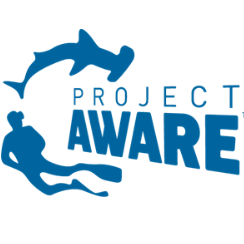A powerful satellite jointly developed by scientists at NASA and the French Space Agency, Centre National d'Etudes Spatiales (CNES), with contributions from the Canadian Space Agency (CSA) and United Kingdom Space Agency, was launched into orbit in December 2022. The Surface Water and Ocean Topography (SWOT) satellite, which will orbit the globe at an altitude of around 890 kilometers (550 miles) for the next three years, has been specifically developed to closely monitor water bodies that cover more than 90% of the Earth's surface in an effort to track climate change more rigorously.
Water Monitoring Mission
The SWOT satellite will measure the depth of both freshwater and ocean systems and monitor how these change over time, to provide key information with regards to the role the ocean plays in climate change; how climate warming affects freshwater systems; and how communities can become more resilient to natural disasters such as droughts and floods.
Keeping Track of Earth's Water Budget
There is a finite amount of water on Earth, but this water moves around in what is known as the water cycle. Up until now, it has not been possible to track the movement of the Earth's water that closely. Using advanced microwave radar technology to measure the height of water bodies, SWOT will shed more light on this.
"We're going to be able to see things that we could just not see before… and really understand where water is at any given time," said Benjamin Hamlington at NASA's Jet Propulsion Laboratory in California.
This can help improve weather forecasting and provide vital information regarding sea level rise and coastal erosion, which can help communities mitigate against potential flooding events.
What Insights Will SWOT Provide?
For the first time ever, all of the Earth's water will be surveyed. Water not only sustains life on Earth, it also influences our climate and weather, and plays an important role in moving and storing surplus carbon and heat resulting from greenhouse gas emissions. By gaining a clearer picture as to where water currently is, where it came from, and where it will be tomorrow, scientists will gain more insight into how the Earth's water systems are changing, how those changes will impact local environments, and what role the ocean plays in influencing climate change.
SWOT will record the world's water resources in high definition, providing more clarity than we've ever seen before. Since SWOT can provide a high-definition view of ocean features, including temporary features such as fronts and eddies, that are less than 100 kilometers (60 miles) wide, scientists hope to gain more insight into the role the ocean plays in influencing or mitigating climate change, particularly with regards to the role it plays as a major carbon and heat sink. It can also provide vital information that will help scientists map changes to coastlines, project future seal level rise, and be pre-warned of potential coastal flooding events.
Many larger rivers currently go unmonitored as they are inaccessible to scientists. SWOT will provide a 3-dimensional view of the entire length of all rivers measuring more than 100 meters (300 feet) across. It will also increase the number of large lakes currently monitored from a few thousand to over a million lakes with a surface area of more than 62,500 square meters (15 acres). Having this information at hand will help scientists better understand the Earth's water budget.
Having a clearer picture of the Earth's water budget can in turn help scientists better understand the water cycle, and some of the extreme weather associated with it fueled by climate change. SWOT data can help scientists anticipate which communities are likely to experience extreme flooding and which communities are more vulnerable to extreme drought, for example. Providing these communities with forewarning can help water management and disaster management agencies prepare for and mitigate against potential disaster.
SWOT will orbit the globe every 21 days for the next three years, measuring the state of freshwater bodies and oceans in 3-D every three weeks. This will allow scientists to closely monitor changes, have a clearer picture as to where water is plentiful and where it is scarce, identify potential problems, and alert the relevant role players so that action can be taken to avoid a potential crisis.
Sources:
https://www.dw.com/en/satellite-launched-to-map-worlds-oceans-track-climate/a-64125461
https://www.nasa.gov/press-release/nasa-launches-international-mission-to-survey-earth-s-water
https://swot.jpl.nasa.gov/mission/overview/
https://www.jpl.nasa.gov/news/5-things-to-know-about-how-swot-will-look-at-the-worlds-water
https://www.jpl.nasa.gov/edu/news/2022/12/8/nasa-mission-takes-a-deep-dive-into-earths-surface-water










